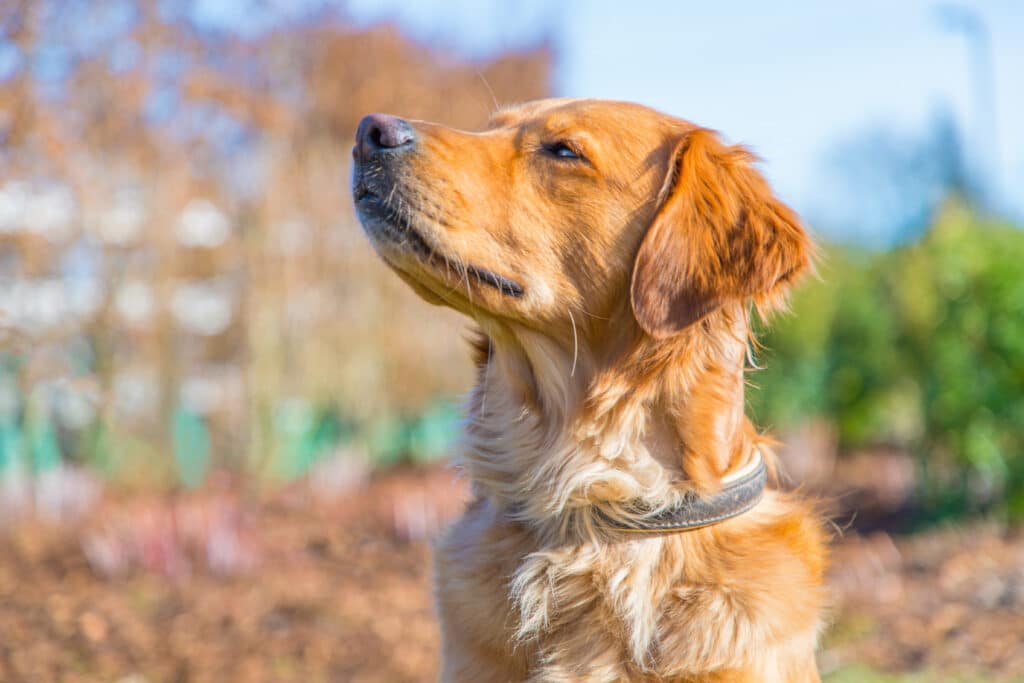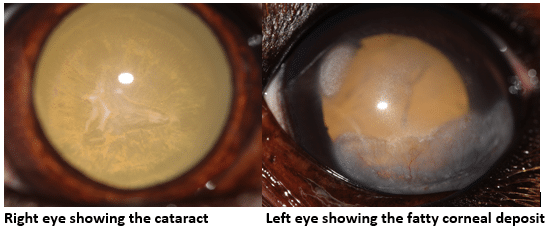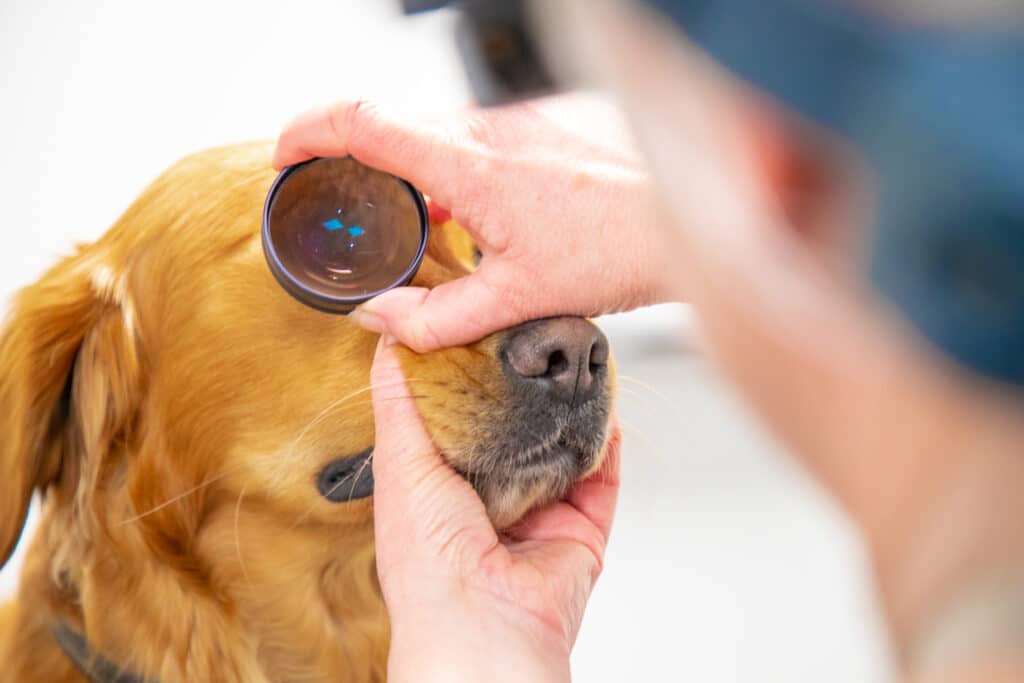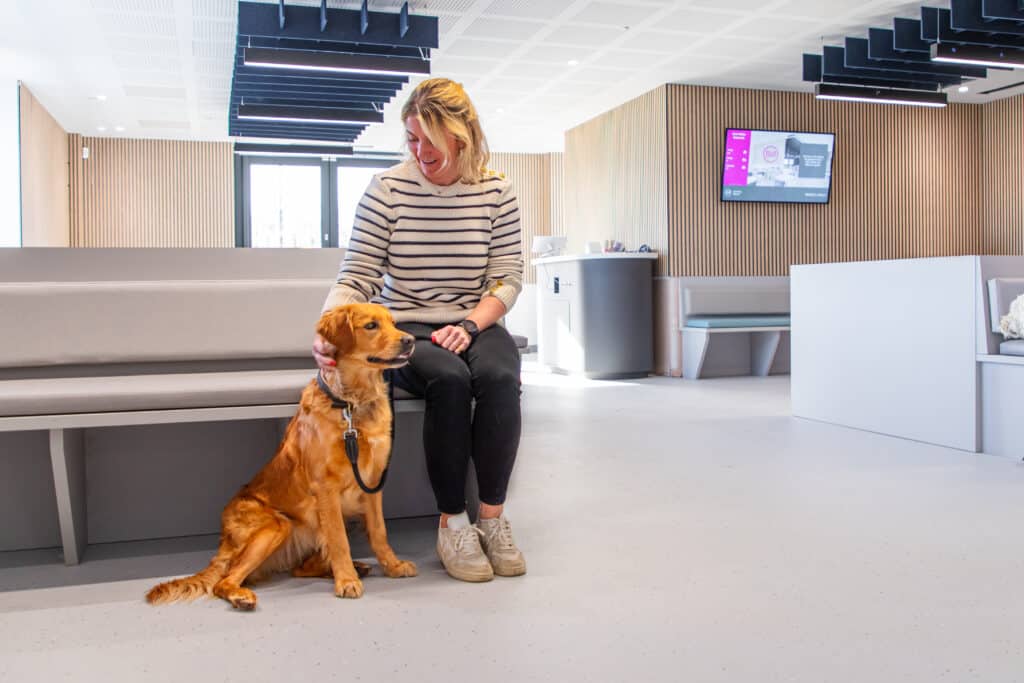The gorgeous, bouncy one year-old Golden Retriever Bailey came to see our Ophthalmology department, as her owner had noticed a change in the appearance of her left eye. Her owner had always thought that Bailey had poor vision at a distance, as she often struggled to see her owner when she was off the lead and not close by.


Lorraine Fleming one of our Consultants in Ophthalmology examined Bailey’s eyes in detail using our ophthalmoscopes and slit-lamp biomicroscope. The examinations revealed that Bailey had more than one eye disease. The white plaque that her owner had noted in the left eye was a fatty deposit. The other problem that we noted was a form of cataract affecting both lenses.

Both of these conditions are problems that can be seen in Golden Retrievers (along with other breeds). Lorraine noted that the appearance of the cataracts was consistent with an inherited cataract seen in the breed, that usually develop fairly early in life. The fatty deposit was also developmental and again common in certain breeds, one of which is the Golden Retriever. When she was examined, both of Bailey’s eyes were comfortable and although her vision is compromised, she is a happy and active dog that copes well. The team plan to monitor Bailey to see if either of these problems get worse over time and she needs any medical or surgical therapy.
Cases like Bailey’s remind us how some breeds are predisposed to certain conditions. As ophthalmologists, the team continues to raise awareness of these problems, so that prospective puppy owners know what questions to ask breeders when they are thinking about buying a puppy. Breeders of purebred dogs are advised to have their dogs’ eyes tested for known inherited diseases, such as cataracts, before they are used for breeding and on an annual basis.
There is an Eye Scheme run by British Veterinary Association in association with the Kennel Club for breeders to use so they can have their stud dogs and breeding bitches assessed annually, by highly qualified veterinary ophthalmologists. They are then given a certificate which you can ask to see when going to view puppies. It is also worth reading about what conditions can occur in the breed that you are interested in, so that you are aware and can look out for any problems in the future. Ideally by not breeding from affected dogs, these inherited problems will be gradually eradicated thereby preventing puppies being born which will grow up to suffer from sight threatening or indeed painful eye conditions.
We are looking forward to seeing Bailey again in a few months’ time to see how she is getting on!

